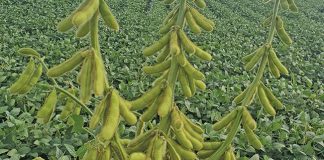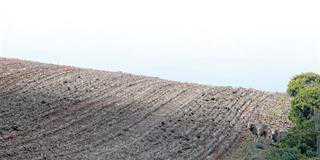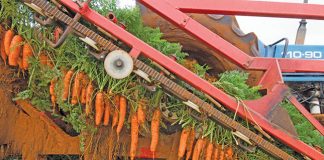Donna Hornby’s newly established company Truffles of Africa in Howick, KwaZulu-Natal, takes on the challenge of bringing black truffles to South Africa.
READ: First commercially grown black truffles for KZN
On hearing the term “truffle” many South Africans would immediately think of small, tasty, soft-centred chocolates. Only a small group of local haute-cuisine chefs would likely first picture a truffle as the aromatic, and very expensive, fruit of an underground fungus which is used as a decadent flavouring for certain restaurant, and sometimes home-made, dishes.
In the 2006/07 European truffle season, producers were paid a whopping R7 500/kg for their black truffles. Edible truffles develop in the roots of certain host trees in a symbiotic relationship. Some species are far less expensive, and considered less classy, than the black or Perigord truffle (Tuber melanosporum). These include the summer truffle (T. aestivum), the winter truffle (T. brumale), the Burgundy truffle (T. uncinatum) and the Chinese truffle (T. sinensis). However, none are as valuable and exclusive as the Italian white truffle (T. magnatum).
Before 1980, black truffles only grew in the wilds of France and Italy. However, intensive scientific research has since developed highly secret techniques for growing truffles commercially to meet international demand. Various truffle species are now grown commercially in countries such as France, Chile, Spain, New Zealand, Australia and the US, with South Africa aiming to follow suit.
Black truffles – a first for South Africa
Donna Hornby is a smallholder near Howick in the KZN Midlands who, with the assistance of her husband Yves Vanderhaeghen, has started a company called Truffles of Africa to establish SA’s very own production sector for this elite agricultural product, by bringing black truffles to South Africa.
“ One can only find out how to grow truffles after paying a substantial amount of money to the licence holders of the techniques involved,” explains Donna. We have formed a partnership with an experienced truffle farmer from Tasmania, Tim Terry, who is providing us with information on production methods, while we have sourced and provided the funding for the initial establishment of the local truffle industry.”
The company’s first 10kg spore consignment(bringing black truffles to South Africa), imported from the black truffle heartland of France and valued at R70 000, arrived at the company’s headquarters in early February this year. Donna says they plan to start producing and selling English oak (Quercus robur) and Holly oak (Q. ilex) saplings inoculated with the black truffle fungus spore.
Hazel species are also suited for growing black truffles, but are not currently available in SA due to onerous quarantine controls on their importation.
Truffles of Africa will be offering a full range of services to support growers in producing the maximum number of top-quality black truffles for the local and export market. We will offer support along the whole production cycle and growers can access it as required,” says Donna.
“Our support services are derived from high-quality ongoing laboratory research and field trials, and are designed to assist the farmer practically to reduce the risks associated with truffle production.”
Growing black truffles
Truffles do well in areas with cold winters and hot summers. Average July temperatures should be between 1°C and 10°C and average December temperatures should range from 17,5°C to 22°C.
Donna says truffles need summer rainfall, and dry autumns and winters. Annual rainfall of between 600ml and 1 400ml is suitable, although low rainfall can be supplemented with irrigation. Soils should be well-drained with a pH level of between 7,6 and 8,3.
Truffle growers in Australia and New Zealand have been able to achieve this pH level in their soils by applying up to 100t of lime/ha. Truffle trees prefer a poor quality rocky soil low in phosphorous and nitrates. North-facing areas are preferable, but not essential.
Trees should not be planted near other trees that have competing fungi on their roots, and we would advise people about these upon request,” stresses Donna. he number of oak trees that should be planted depends on the grower’s requirements.
For a fully commercial enterprise Truffles of Africa recommends a tree density of 400 trees/ha. for a small home orchard a minimum of 10 trees would improve the chances of a successful and worthwhile black truffle harvest. Truffles can be found peaking from the soil surface down to a depth of 350mm, although they generally tend to grow in the top 150mm of the soil.
Pigs and dogs can be used to sniff out truffles at harvesting time. However, using specially trained dogs is the preferred method overseas as dogs don’t eat truffles like pigs tend to do, and they obey verbal commands more readily.
Operational costs
The costs and returns on black truffles can vary between growers and sites depending on several factors. “These include the topography and soil type that influence the preparation, irrigation and the rate of fungal growth; determining the use of existing infrastructure, such as farm pumps, to reduce the set-up costs of the enterprise; the scale of the operation and its resultant yields; the lag time between initial investment, planting and the harvesting of black truffles in good quantities; and the farmer’s level of management and understanding.”
From scratch, set-up costs for black truffle production are high. The following is a broad guide of current set-up costs per hectare: R25 000 for irrigation infrastructure; R12 000 (excluding transport) for lime, soil rectification and preparation; R1 400 for the planting of the trees; R52 000 for 400 inoculated trees at R130 each; and R30 000 for fencing if using erected bonnox.
Growers could start finding truffles with some reliability in year four, although it is recommended to budget on first finding them in years six or seven. With good management, black truffle growers could expect to harvest between 2kg/ha and 4kg/ha from years six to seven, with an annual increase reaching 30kg/ha to 60kg/ha from year 10 onwards.
At a conservatively estimated price of R6 000/kg, growers could realise R12 000/ha in year six (2kg), R30 000/ha in year seven (5kg), R84 000/ha in year eight (14kg), R132 000/ha in year nine (22kg), and R180 000/ha in year 10 (30kg).
“Although truffles take a while to show a return on investment, by year 15 the cumulative returns per hectare significantly outstrip other high-earning agricultural crops,” Donna points out. She gives the following comparisons: truffles (R1 250 000), macadamias (R417 000), irrigated avocados (R360 000) and irrigated potatoes (R287 200).
Black truffle markets
SA has two main markets for fresh truffles – top restaurants situated mainly in Johannesburg and Cape Town, and restaurants and wholesale markets in Europe, America and Asia.
South African growers could either attempt to develop their own markets for their truffles, or could enter into agreements with Truffles of Africa whereby the company would guarantee to purchase all the truffles growers harvest.
Contact Donna Hornby on (033) 234 4664, 072 538 1707, e-mail [email protected] or visit www.trufflesofafrica.com E- mail Tim Terry at [email protected]. |fw













